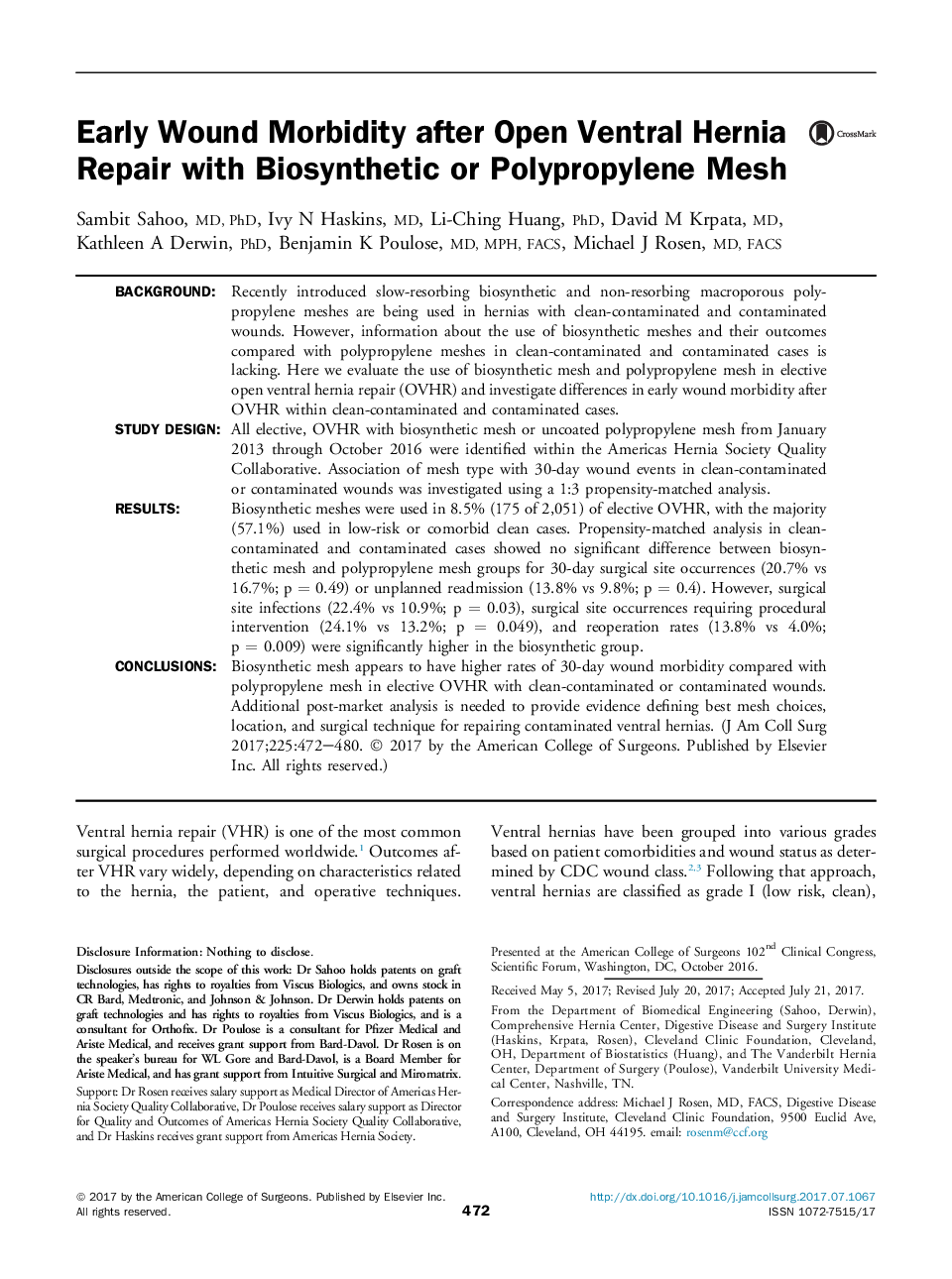| Article ID | Journal | Published Year | Pages | File Type |
|---|---|---|---|---|
| 5733367 | Journal of the American College of Surgeons | 2017 | 10 Pages |
BackgroundRecently introduced slow-resorbing biosynthetic and non-resorbing macroporous polypropylene meshes are being used in hernias with clean-contaminated and contaminated wounds. However, information about the use of biosynthetic meshes and their outcomes compared with polypropylene meshes in clean-contaminated and contaminated cases is lacking. Here we evaluate the use of biosynthetic mesh and polypropylene mesh in elective open ventral hernia repair (OVHR) and investigate differences in early wound morbidity after OVHR within clean-contaminated and contaminated cases.Study DesignAll elective, OVHR with biosynthetic mesh or uncoated polypropylene mesh from January 2013 through October 2016 were identified within the Americas Hernia Society Quality Collaborative. Association of mesh type with 30-day wound events in clean-contaminated or contaminated wounds was investigated using a 1:3 propensity-matched analysis.ResultsBiosynthetic meshes were used in 8.5% (175 of 2,051) of elective OVHR, with the majority (57.1%) used in low-risk or comorbid clean cases. Propensity-matched analysis in clean-contaminated and contaminated cases showed no significant difference between biosynthetic mesh and polypropylene mesh groups for 30-day surgical site occurrences (20.7% vs 16.7%; p = 0.49) or unplanned readmission (13.8% vs 9.8%; p = 0.4). However, surgical site infections (22.4% vs 10.9%; p = 0.03), surgical site occurrences requiring procedural intervention (24.1% vs 13.2%; p = 0.049), and reoperation rates (13.8% vs 4.0%; p = 0.009) were significantly higher in the biosynthetic group.ConclusionsBiosynthetic mesh appears to have higher rates of 30-day wound morbidity compared with polypropylene mesh in elective OVHR with clean-contaminated or contaminated wounds. Additional post-market analysis is needed to provide evidence defining best mesh choices, location, and surgical technique for repairing contaminated ventral hernias.
